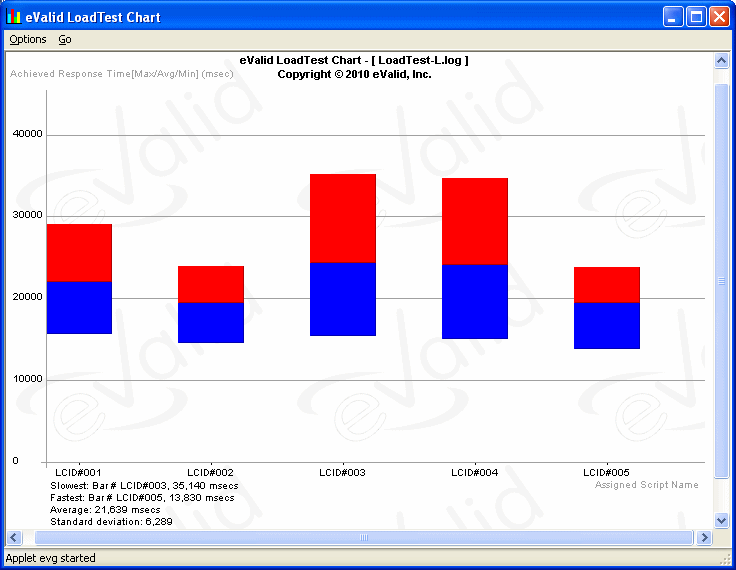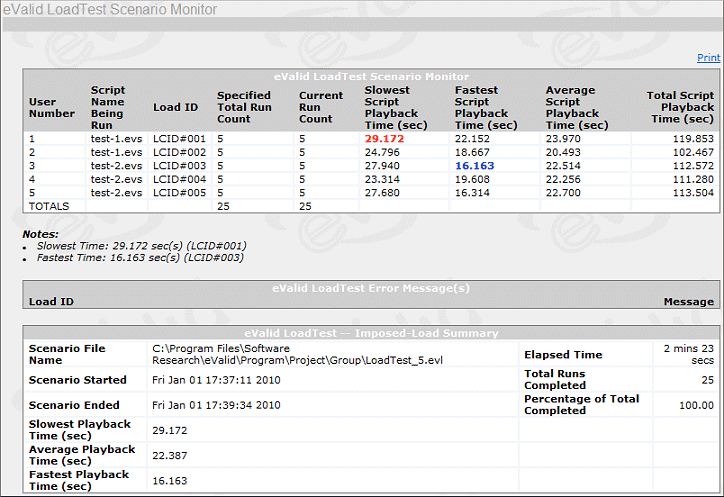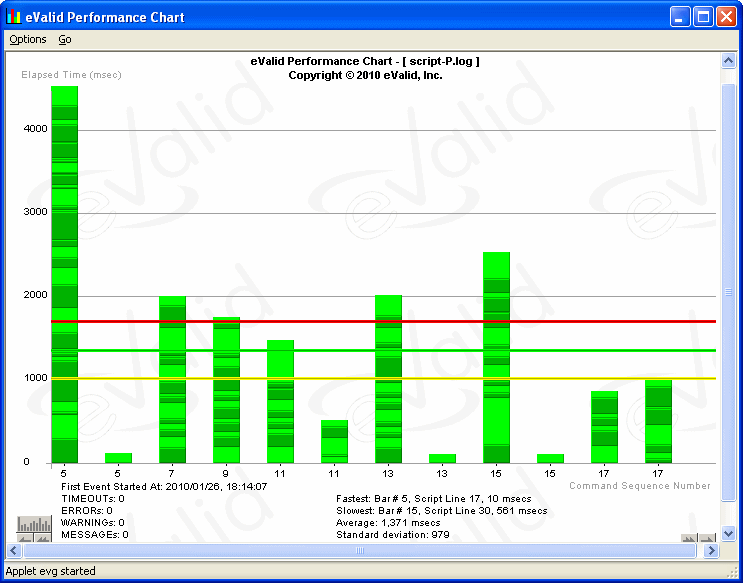|
|
eValid's Fixed-Price Performance Testing Program allows firms to increase the ROI on limited testing budgets -- without the need to invest in tools, people and training. You get top-notch state-of-the art assessment of server capacity that maximizes end-user satisfaction (Summary).
How It Works!
Putting the needs of our clients first,
these fixed-price Performance Testing Program
packages are designed to provide top-notch quality
testing at affordable prices.
By taking advantage of our experience in developing and applying
functional and performance test and load scripts you get answers to your
critical performance questions and
save thousands!
Clients select the plan that fits their budget and needs. eValid's performance testing team then conducts remote testing of your WebSite or web application's scalability and responsiveness, based on predetermined numbers of Transactional Users (TU's), Navigational Users (NU's), and detailed page timing analyses.
Main Project Steps
Here are the main steps in a typical
Performance Testing Program project.
Examples of Charts
Here are examples of charts and tables that are used to back up results
given in the report.

|

|

LoadTest Chart
| LoadTest Result Table
| Performance Chart
| |
Project Deliverables
eValid Performance Testing Program pricing is
inclusive of all software products, equipment, and
bandwidth needed to develop the tests and conduct the testing.
All of the testing are performed remotely and public or remote access
to the application or WebSite under test must be available to the test team.
Confidentiality agreements will be executed if necessary.
The scripts and scenarios are client property and are delivered
in a form that can be re-run on client machines
(without special licensing).
Typical Project Parameters.
The table below gives typical parameters for three levels of the
Performance Testing Program.
These estimates may vary depending on the details of the web application
or WebSite being tested.
| Description | Bronze Package Total Cost $4,950 | Silver Package Total Cost $7,450 | Gold Package Total Cost $9,950 |
| Max Number of Scripts (TU's + NU's) | 5 | 10 | 15 |
| Max Number of Load Scenarios | 3 | 5 | 10 |
| Max Number of URLs Involved | 50 | 100 | 200 |
| Max Transactional Users (TU's via eValid) | 50 | 100 | 250 |
| Max Navigational Users (NU's via eVlite) | 950 | 1,900 | 4,750 |
| Max Users (NU's + TU's) | 1,000 | 2,000 | 5,000 |
| Test Driver Machines Used | 1-2 | 2-4 | 4-6 |
| Max Load Test Repetitions | 5 | 10 | 15 |
| Max Pages Tuned | 3 | 5 | 10 |
| Scripting Effort | 3 Days | 6 Days | 9 Days |
| Project Duration | 5 Days | 10 Days | 20 Days |